
In recent times, you may have heard more or less of "Subject 3", with waving hands, half-crotch feet, and matching rhythmic music. This dance move has been popular all over the Internet. imitate.
What would happen if similar dances were generated by AI? As shown in the picture below, both modern people and paper people are doing uniform movements. What you might not guess is that this is a dance video generated based on a picture.
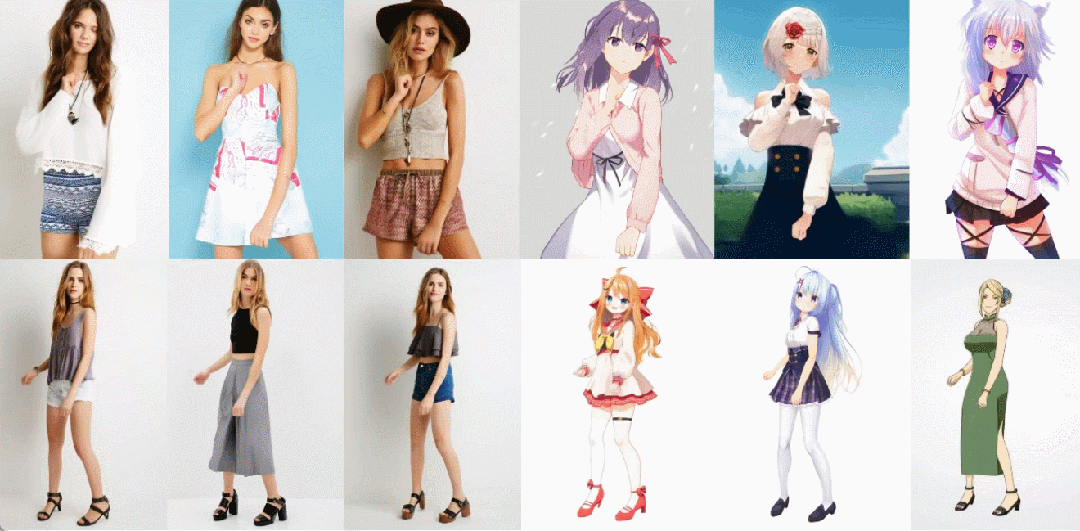
The character movements become more difficult, and the generated video is also very smooth (far right):
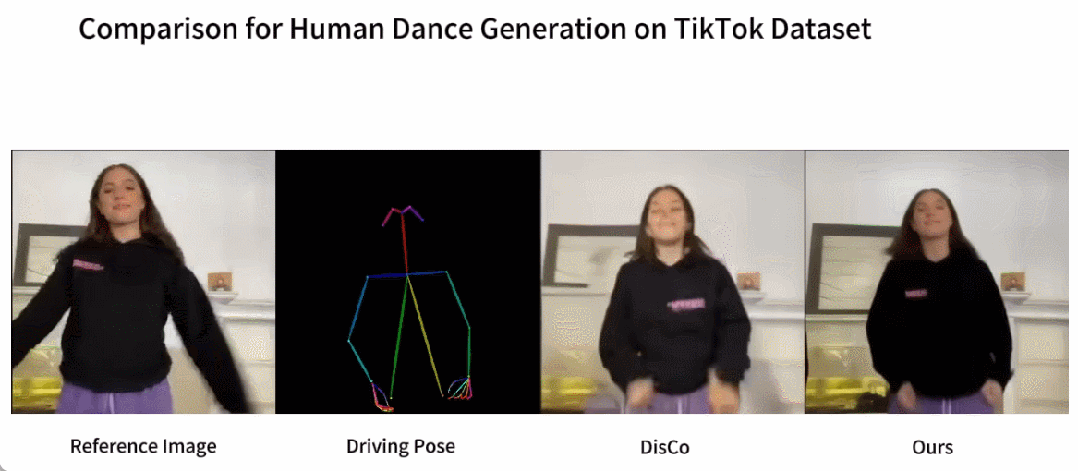
Let Messi and Iron Man move, it’s no problem:
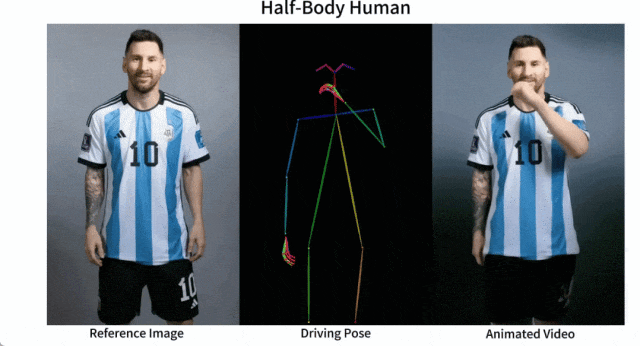
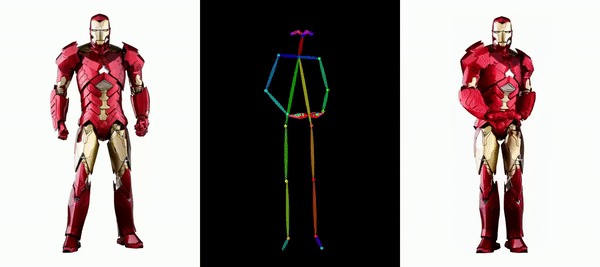
There are also various anime ladies.

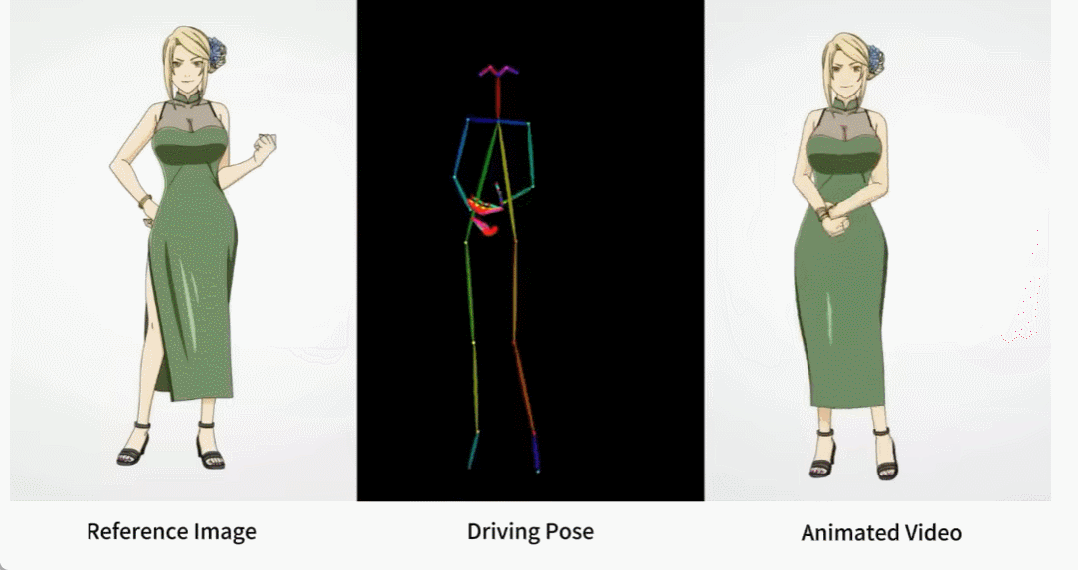
How are these effects achieved? Let’s continue reading
Character animation is the process of converting original character images into realistic videos in the desired pose sequence. This task has many potential application areas, such as online retail, entertainment videos, art creation, virtual characters, etc.
Since the advent of GAN technology, researchers have been continuously exploring in-depth Methods for converting images into animations and completing pose transfer. However, the generated images or videos still have some problems, such as local distortion, blurred details, semantic inconsistency, and temporal instability, which hinder the application of these methods.
Ali's research The authors proposed a method called Animate Anybody that converts character images into animated videos that follow the desired pose sequence. This study adopted a Stable Diffusion network design and pre-trained weights, and modified the denoising UNet to accommodate multi-frame input

To keep the appearance consistent, the study introduced ReferenceNet. The network adopts a symmetric UNet structure and aims to capture the spatial details of the reference image. In each corresponding UNet block layer, this study uses a spatial-attention mechanism to integrate the features of ReferenceNet into the denoising UNet. This architecture enables the model to comprehensively learn the relationship with the reference image in a consistent feature space
To ensure pose controllability, this study designed a lightweight pose guidance processor to effectively integrate attitude control signals into the denoising process. In order to achieve temporal stability, this paper introduces a temporal layer to model the relationship between multiple frames, thereby retaining high-resolution details of visual quality while simulating a continuous and smooth temporal motion process.
Animate Anybody was trained on an in-house dataset of 5K character video clips, as shown in Figure 1, showing the animation results for various characters. Compared with previous methods, the method in this article has several obvious advantages:
This paper is evaluated on two specific human video synthesis benchmarks (UBC Fashion Video Dataset and TikTok Dataset). The results show that Animate Anybody achieves SOTA results. Additionally, the study compared the Animate Anybody method with general image-to-video methods trained on large-scale data, showing that Animate Anybody demonstrates superior capabilities in character animation.
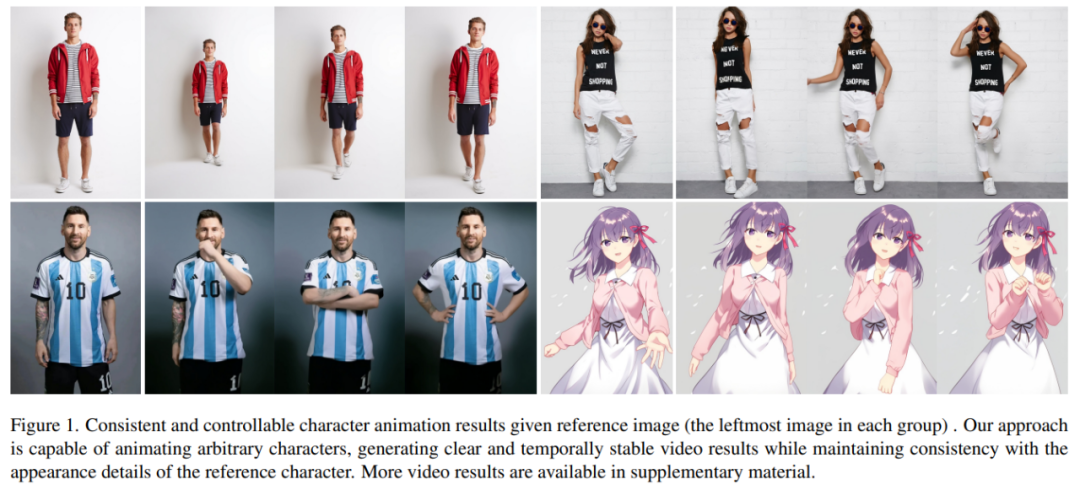
Animate Anybody compared to other methods:


The processing method of this article is shown in Figure 2. The original input of the network is composed of multi-frame noise. In order to achieve the denoising effect, the researchers adopted a configuration based on SD design, using the same framework and block units, and inheriting the training weights from SD. Specifically, this method includes three key parts, namely:
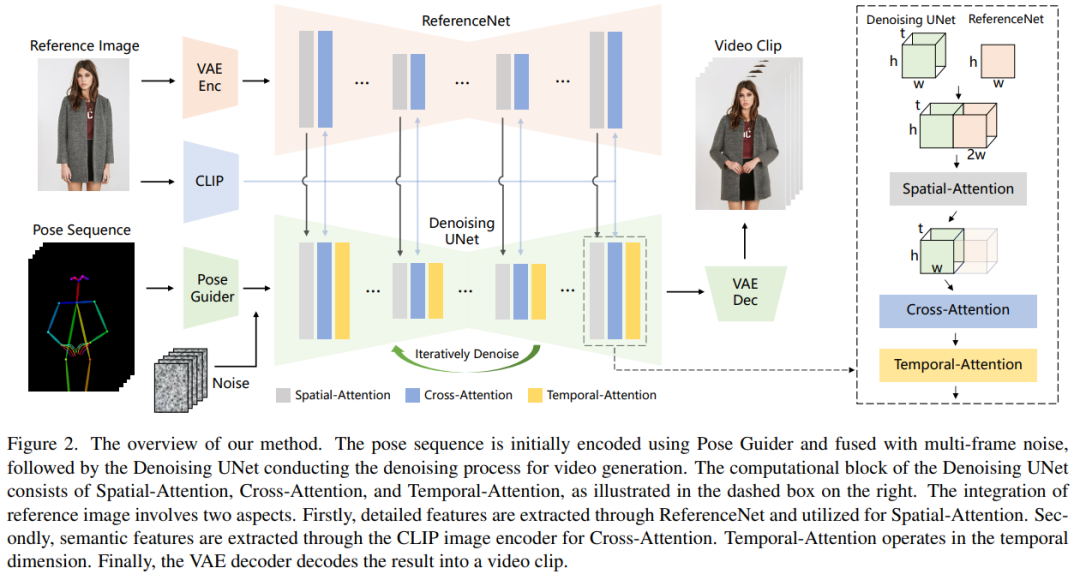
ReferenceNet
ReferenceNet is a reference image feature extraction Network, its framework is roughly the same as the denoising UNet, only the temporal layer is different. Therefore, ReferenceNet inherits the original SD weights similar to the denoising UNet, and each weight update is performed independently. The researchers explain how to integrate features from ReferenceNet into denoising UNet.
The design of ReferenceNet has two advantages. First, ReferenceNet can leverage the pre-trained image feature modeling capabilities of raw SD to produce well-initialized features. Second, since ReferenceNet and denoising UNet essentially have the same network structure and shared initialization weights, denoising UNet can selectively learn features associated in the same feature space from ReferenceNet.
Attitude guide
The rewritten content is: This lightweight attitude guide uses four convolutional layers (4 × 4 kernels, 2 × 2 stride) with channel numbers of 16, 32, 64, 128, similar to the conditional encoder in [56], used to align the gesture image. The processed pose image is added to the latent noise and then input to the denoising UNet for processing. The pose guide is initialized with Gaussian weights and uses zero convolutions in the final mapping layer
Temporal layer
The design of the time layer is inspired by AnimateDiff. For a feature map x∈R^b×t×h×w×c, the researcher first deforms it into x∈R^(b×h×w)×t×c, and then performs temporal attention, that is, along Self-attention in dimension t. The features of the temporal layer are merged into the original features through residual connections. This design is consistent with the two-stage training method below. Temporal layers are used exclusively within the Res-Trans block of denoising UNet.
Training strategy
The training process is divided into two stages.
Rewritten content: In the first stage of training, a single video frame is used for training. In the denoising UNet model, the researchers temporarily excluded the temporal layer and took single-frame noise as input. At the same time, the reference network and attitude guide are also trained. Reference images are randomly selected from the entire video clip. They used pretrained weights to initialize the denoising UNet and ReferenceNet models. The pose guide is initialized with Gaussian weights, except for the final projection layer, which uses zero convolutions. The weights of the VAE encoder and decoder and the CLIP image encoder remain unchanged. The optimization goal of this stage is to generate high-quality animated images given the reference image and target pose
In the second stage, the researcher introduces the temporal layer into the previously trained model and initialize it using the pre-trained weights in AnimateDiff. The input to the model consists of a 24-frame video clip. At this stage, only the temporal layer is trained, while the weights of other parts of the network are fixed.
Qualitative results: As shown in Figure 3, the method in this article can produce animations of any character, including full-body portraits and half-length portraits , cartoon characters and humanoid characters. This method is capable of producing high definition and realistic human details. It maintains temporal consistency with the reference image and exhibits temporal continuity from frame to frame even in the presence of large motions.
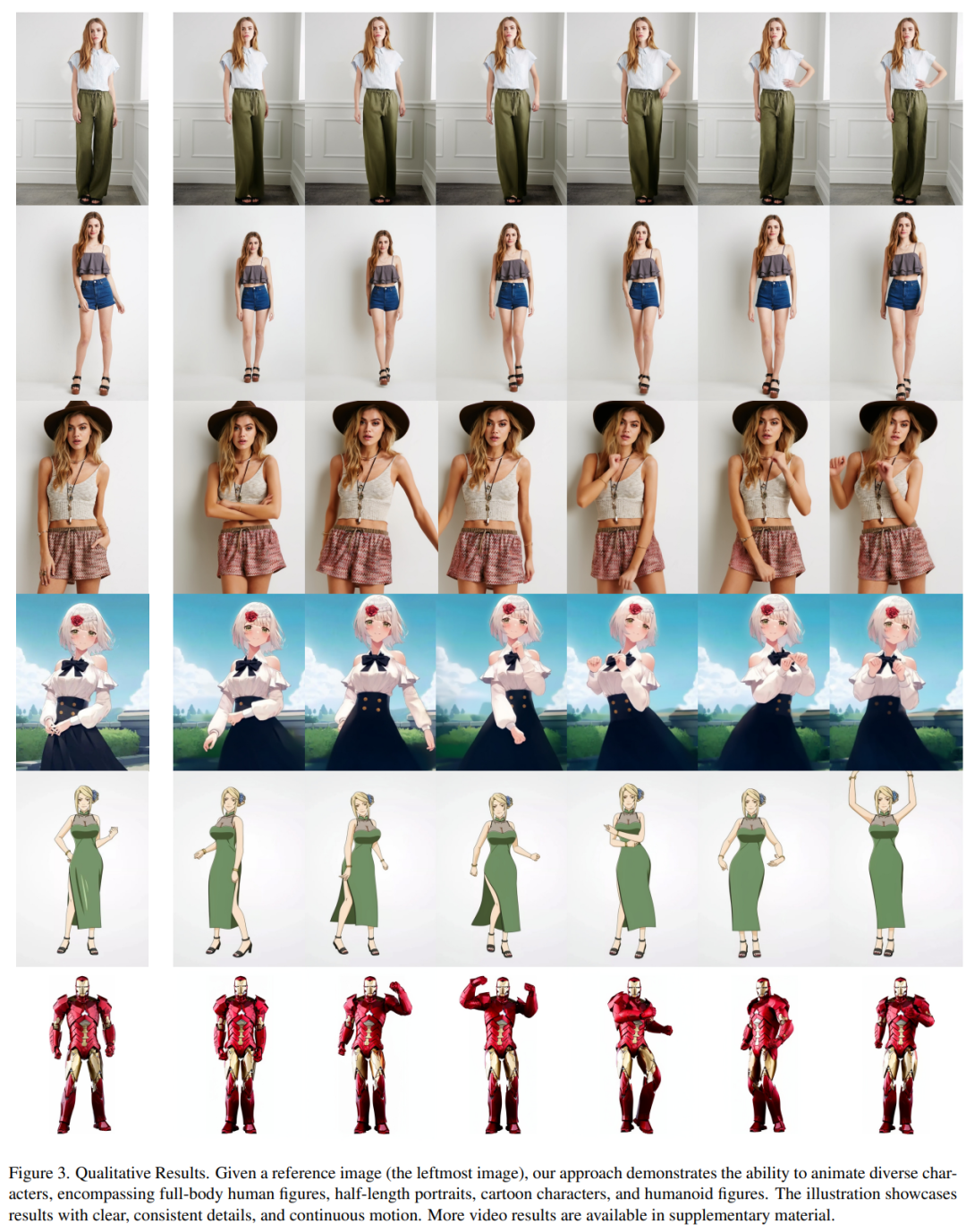
Fashion video synthesis. The goal of fashion video synthesis is to transform fashion photos into realistic animated videos using driven pose sequences. Experiments are conducted on the UBC Fashion Video Dataset, which consists of 500 training videos and 100 testing videos, each containing approximately 350 frames. Quantitative comparisons are shown in Table 1. It can be found in the results that the method in this paper is better than other methods, especially in video measurement indicators, showing a clear lead.
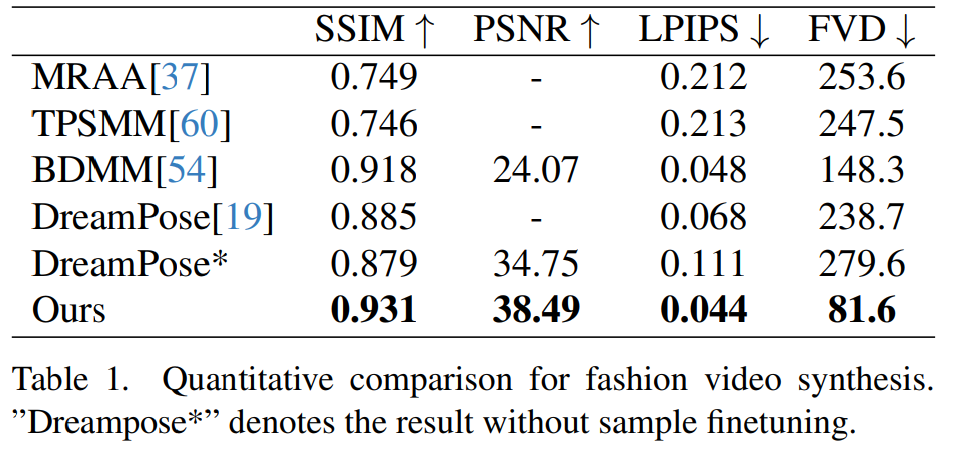
Qualitative comparison is shown in Figure 4. For a fair comparison, the researchers used DreamPose’s open source code to obtain results without sample fine-tuning. In the field of fashion videos, the requirements for clothing details are very strict. However, videos generated by DreamPose and BDMM fail to maintain consistency in clothing details and exhibit significant errors in color and fine structural elements. In contrast, the results generated by this method can more effectively maintain the consistency of clothing details.
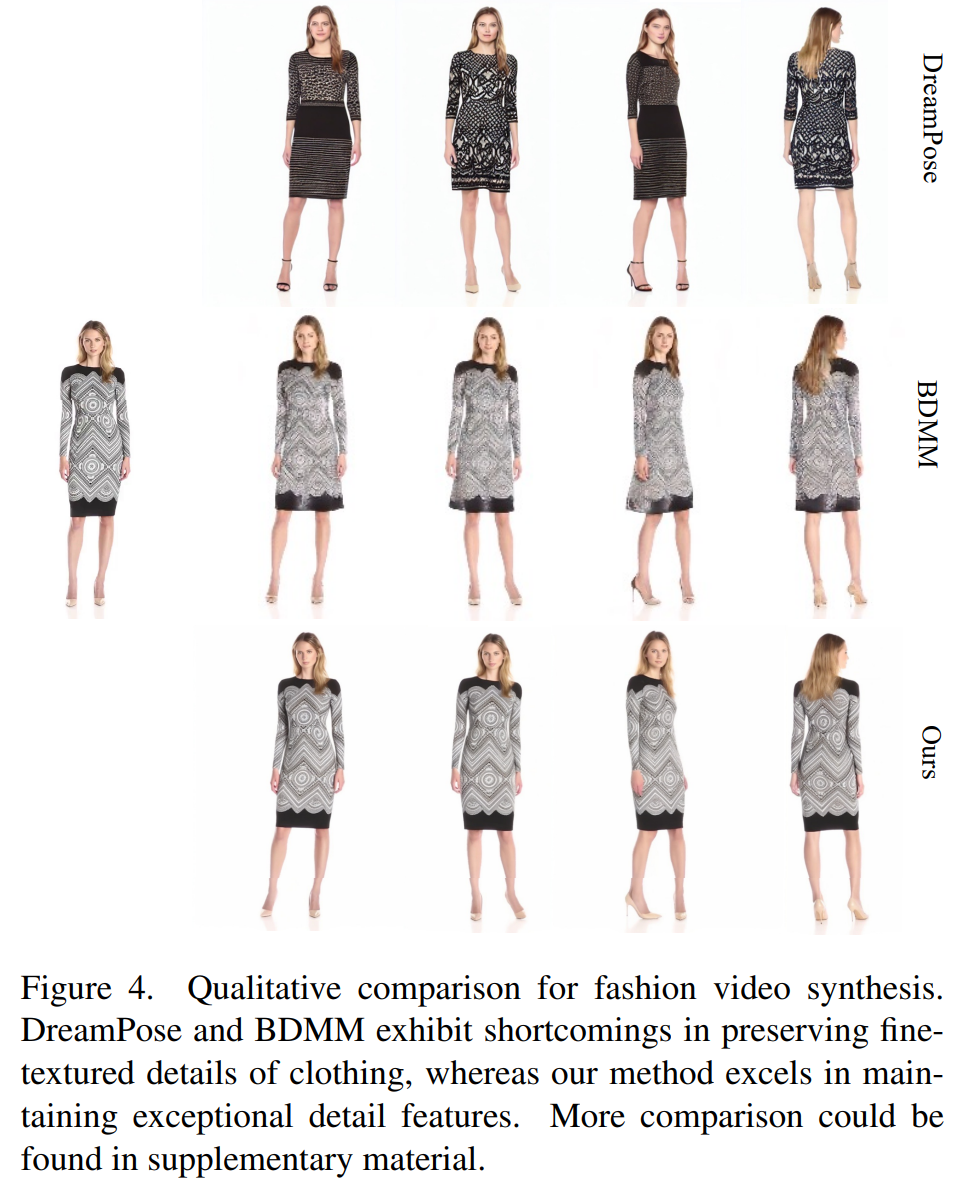
Human dance generation is a study that aims to generate humans by animating images of realistic dance scenes dance. The researchers used the TikTok data set, which includes 340 training videos and 100 test videos. They performed a quantitative comparison using the same test set, which included 10 TikTok-style videos, following DisCo's dataset partitioning method. As can be seen from Table 2, the method in this article achieves the best results. In order to enhance the generalization ability of the model, DisCo combines human attribute pre-training and uses a large number of image pairs to pre-train the model. In contrast, other researchers only trained on the TikTok data set, but the results were still better than DisCo

A qualitative comparison with DisCo is shown in Figure 5 . Considering the complexity of the scene, DisCo's method requires the additional use of SAM to generate human foreground masks. In contrast, our method shows that even without explicit human mask learning, the model can grasp the foreground-background relationship from the subject's motion without prior human segmentation. Furthermore, in complex dance sequences, the model excels at maintaining visual continuity throughout the action and shows greater robustness in handling different character appearances.
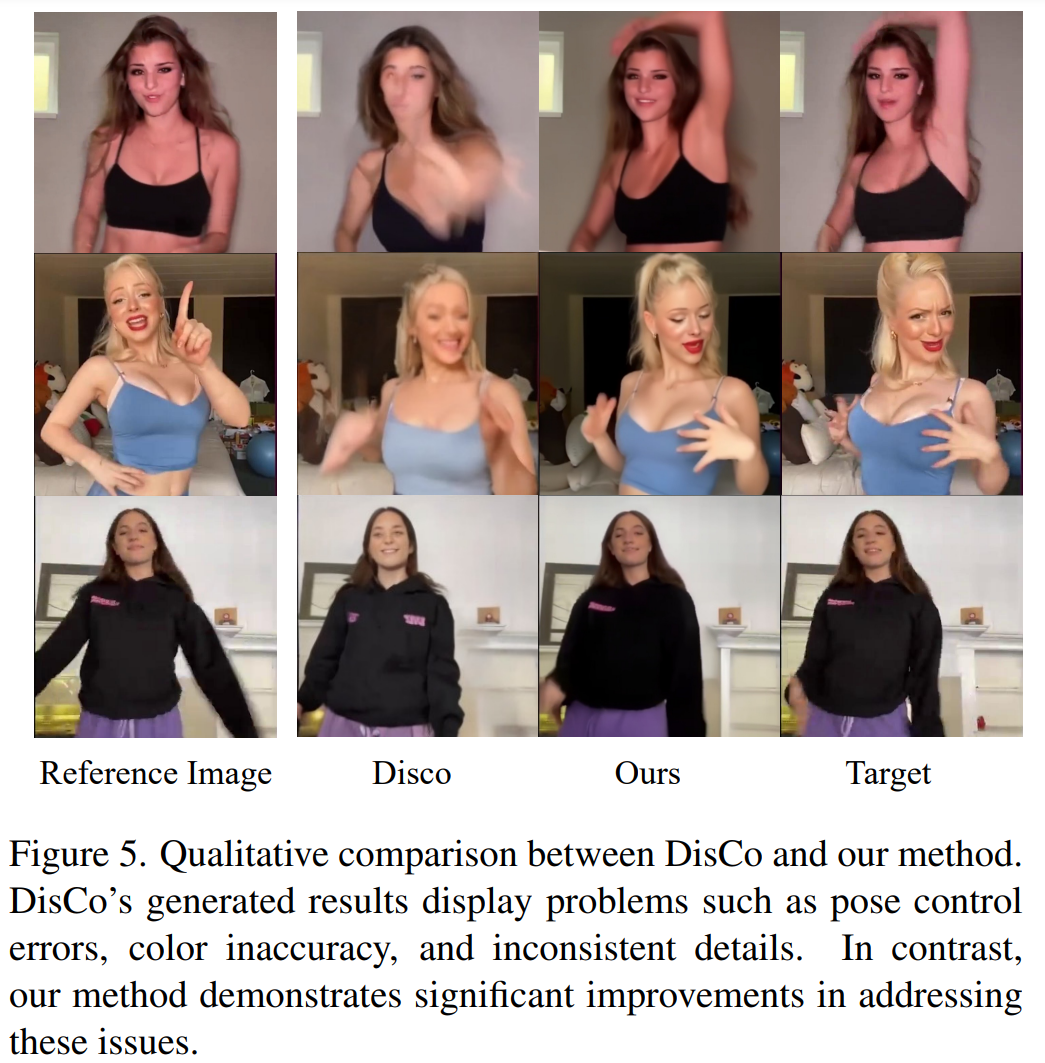
Image - Generic method for video. Currently, many studies have proposed video diffusion models with strong generation capabilities based on large-scale training data. The researchers chose two of the best-known and most effective image-video methods for comparison: AnimateDiff and Gen2. Since these two methods do not perform pose control, the researchers only compared their ability to maintain the appearance fidelity of the reference image. As shown in Figure 6, current image-to-video approaches face challenges in generating a large number of character actions and struggle to maintain long-term appearance consistency across videos, thus hindering effective support for consistent character animation.
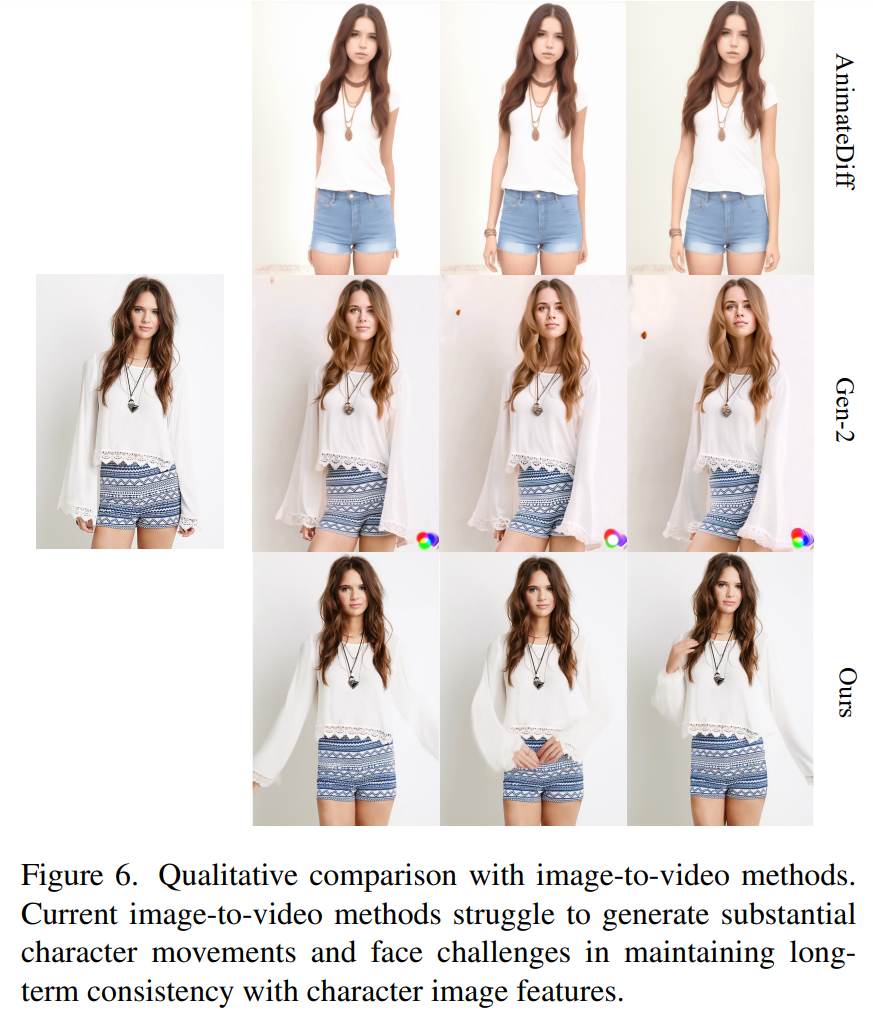
Please consult the original paper for more information
The above is the detailed content of 'Subject Three' that attracts global attention: Messi, Iron Man, and two-dimensional ladies can handle it easily. For more information, please follow other related articles on the PHP Chinese website!




